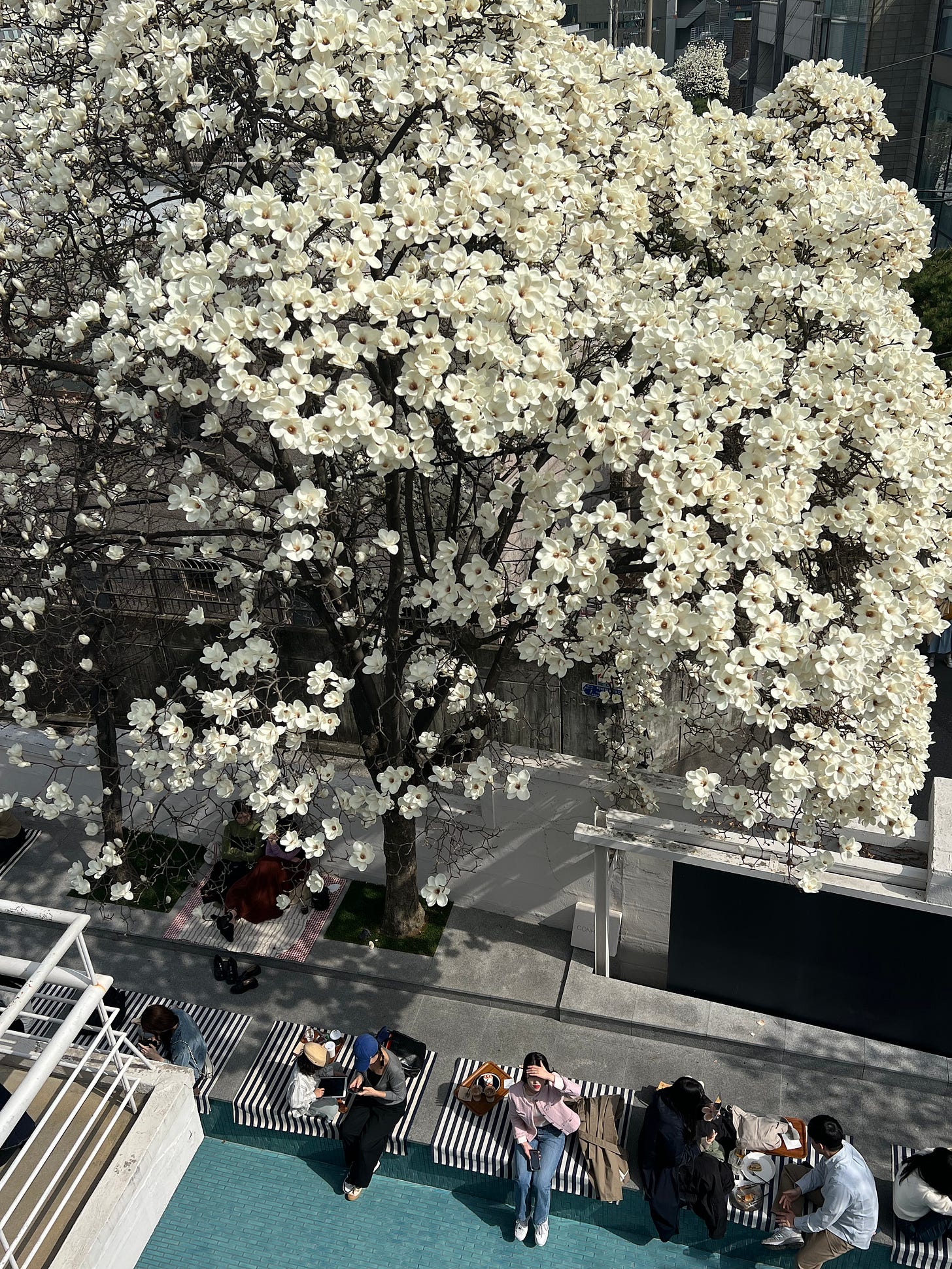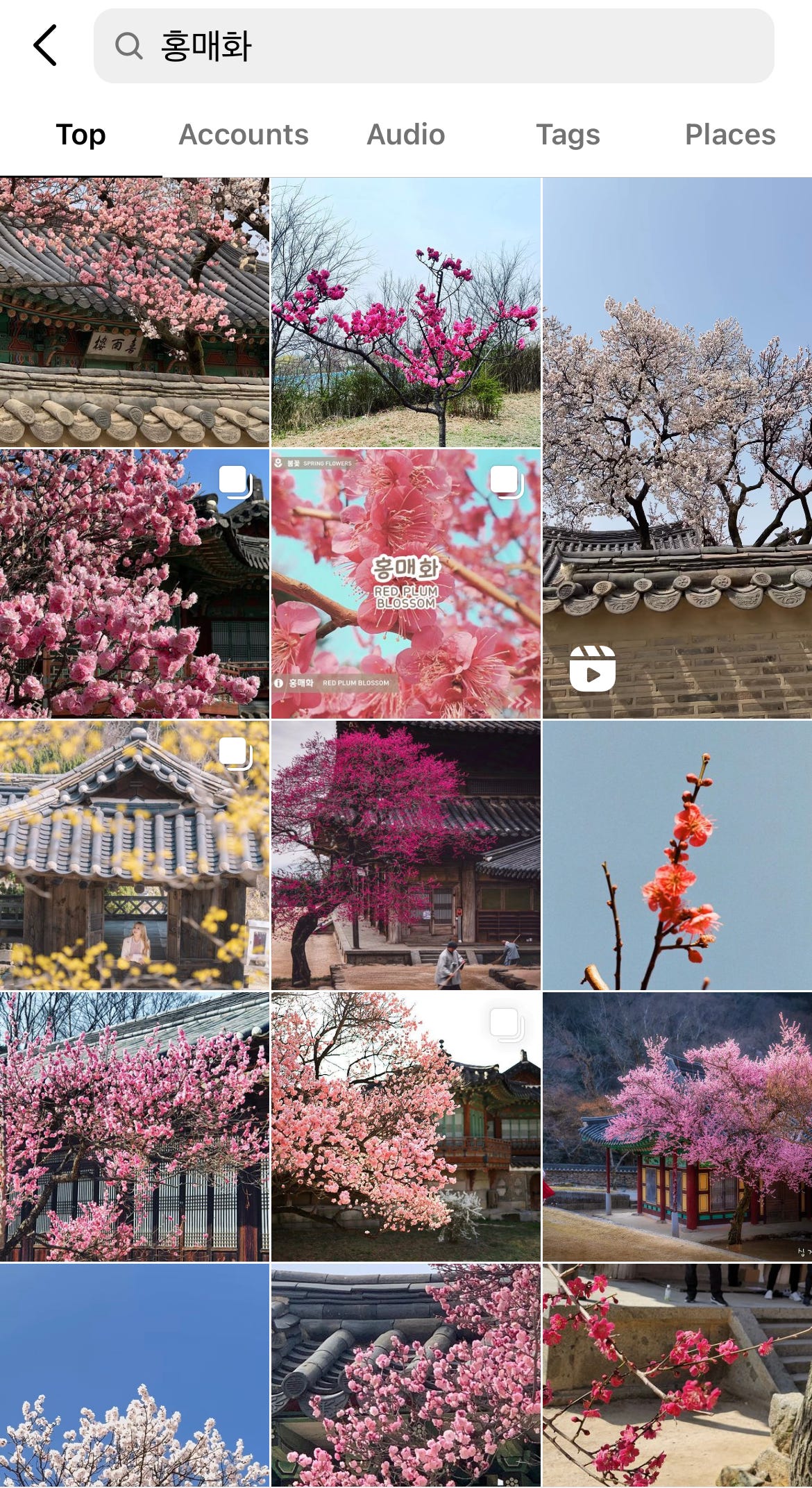Why we turn into a version of iSheep during spring
What a spring promenade in Seoul reveals about Apple's fandom
It’s that time of the year when people flock towards the latest “It” flower-spotting spots in Seoul and beyond.

Seoul’s flower hunting bonanza is so normalized that it’s hardly ever questioned. If you pulled a random Seoulite off the street to ask why they go flower spotting they’d probably say “because it’s Spring” after mulling over the question for a bit.
I don’t see how this is any different from asking an Apple fan why they’re getting ready to shell out cash for the latest iPhone drop. “Because it’s Apple” my sister always retorts when I inquire into her motivations for becoming a first-user for whatever Apple “innovation”.

So I figured I’d probe a bit deeper into the phrase “because it’s Apple/Spring” seeing that there are parallels in fandom-based ritualization. What values are encoded into Spring and Apple? Why do people seek such values out year after year? This conundrum may be simpler than we think.
The psychology behind flower hunting
Seoul’s tempo is set to ppali-ppali (chop-chop). At such a pace, time is used not savored. And from a productivity standpoint time has no obligation to be savory. But humans aren’t robots. There are moments when we need to step off the productivity machine and have a bit of time for ourselves.
Enter flower hunting.
When we, Seoulites, go seeking out plum flowers, magnolias, cherry blossoms in the spirit of a Pokemon trainer intent on catching an elusive Suicune (yes I’m of that generation), there’s an odd determination to leave a photo. Taking the perfect shot is just as important as indulging in the act of flower hunting.
Flower hunters line up to take portraits in front of unofficial photo “hot” spots—in front of a red plum tree ablaze in pink brilliance or a magnolia tree blanketed with white softness. While some may dismiss such photo taking as narcissistic and oh-so MZ, I view the frenzy as a means through which Seoulites sub-consciously remind themselves that they are the protagonist of their lives. Artificially inserting oneself into a scenery of blossoming trees and flowers is at once a proclamation and a reclamation of a sense of self that, at times, gets lost within quotidian routines. It’s the Seoulite way of indirectly asserting one’s prominence as an entity that has life and meaning outside the system of productivity.
Artificially inserting oneself into a scenery of blossoming trees and flowers is at once a proclamation and a reclamation of a sense of self that, at times, gets lost within quotidian routines.
When placed against the context of time, the psychology behind spring photography is largely motivated by a desire to crystallize the moment. To fight against the evanescence of the hour. To retain a tangible memory that doubles as evidence that we—time-pressed Seoulites—have achieved the feat of savoring time instead of using it as fuel to crank up the nation’s GDP.
To an extent, the impulse to leave behind a photographic record isn’t specific to Seoul. Photographers all over the world unite in their efforts to document the change of the seasons in idiosyncratic ways. However, the significance that Seoulites impart onto spring photography is probably greater than that of most other cosmopolitans. Time is scarce in Seoul. Flower hunting changes up the syntax of time to allow people to revel in the beauty of spring. In this way, flower spotting is a respite in of itself and an act that re-instills the belief that we are the blossom within our lives.
Delivering on promises
My introspective study on Seoul’s flower hunting reveals that spring delivers on its promise to reinvigorate nature and humans alike with life—a force that constantly surrounds us but is seldom observed and felt with such visceral splendor as in spring. A splendor that recedes in brilliance over time, fading into a memory that builds our anticipation for spring year after year.
Apple operates its fan club based on a similar mechanism of promise delivering. When Apple loyalists feel their adrenaline levels rise at the news of an upcoming product, they’re essentially responding to the promise of innovation. I know that I used the term “innovation” in double quotation marks earlier on in a nod to the iPhone’s subtle upgrades over the years, but to be fair we should give Apple credit for launching a whole new mode of living.
Within the span of nearly two decades Apple directly influenced the way we chill, communicate and work. And it’s probably not going to stop there.
This belief in Apple is akin to our belief in spring. Just like how spring portends life, Apple portends progress. This promise of an almost foreseeable yet tantalizing future is what makes both spring and Apple irresistible. The difference between the two lies in how they manifest this irresistible quality.
This promise of an almost foreseeable yet tantalizing future is what makes both spring and Apple irresistible.
Spring’s irresistibility lies in its evanescence. The season itself is change and life. Spring draws us in with a beauty that is vivacious but fleeting and leaves us hungry for more. We can never get enough of it. Let’s be honest—photos don’t do spring true justice. Likewise, Apple reifies irresistibility in the language of renewed progress. Innovative technological and design features alike elevate our standards of living and enable us to transcend our current modes of thinking and doing. Apple’s newest release leaves us thinking in its wake: what’s next?
Building expectation is—in the eyes and hearts of fans—the essence of irresistibility. Giving fans something to look forward to, in the form of a solid promise, is the stuff that loyalty is made up of. The Little Prince sums it up succinctly in his observation that “[t]he most beautiful things in the world cannot be seen or touched, they are felt with the heart.”


